- About Us
- Bearings
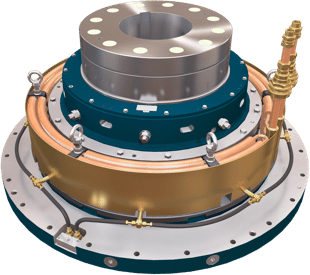 Vertical Bearings
Vertical Bearings
- AV Series
AV
LV SeriesLV
MV SeriesMV
V SeriesV
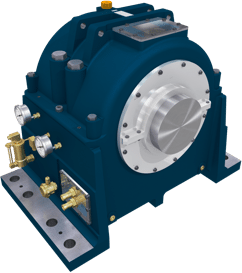 Horizontal Bearings
Horizontal Bearings
- HD Series
HD
IH SeriesIH
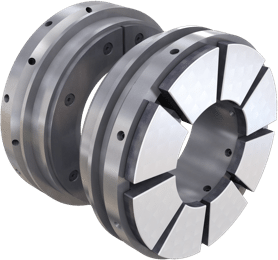 Tilting Pad Bearings
Tilting Pad Bearings
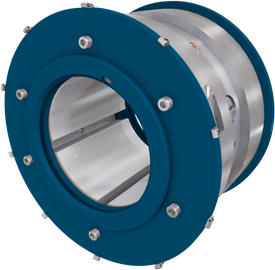 Journal Bearings
Journal Bearings
- Journal Pad Units
Journal
 Thrust Bearings
Thrust Bearings
- SE Series
SE
Omega EqualisedOmega
OmegaOmega
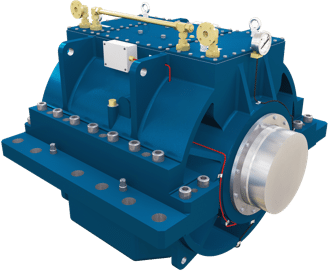 Marine Bearings
Marine Bearings
- Marine Gearbox Internals
Marine
Marine Propulsion Motor
and Generator BearingsEnter your email to download the full paper
"*" indicates required fields
Outline
Home > The Shrouded Ring Bearing – An Advance for Large, High Performance, Self-Contained SystemsThe Shrouded Ring Bearing – An Advance for Large, High Performance, Self-Contained Systems
J E L Simmons and S D Advani, University of Durham and Michell Bearings, UK
Synopsis
This paper describes the design and experimental investigation of a new, large, high speed self-contained bearing to be used mainly in large motor and hydro generator applications. A range of test conditions were applied substantially in advance of those available previously for a bearing of this sort. In particular very high machinery overspeeds at full load were simulated successfully. The experimental work included comparative tests in which the bearing was also operated with a conventional external circulating oil arrangement.
This work opens up the possibilty of providing substantial machinery installations free from external lubrication systems. The attendant cost reduction and maintenance implications are considerable.
Introduction
A self-contained, hydrodynamically lubricated bearing is one which is able to provide itself with a continuous supply of cool oil for the load carrying surfaces. The bearing uses its own resources to circulate an amount of oil fixed within the confines of the bearing casing. In many cases water is available as a cooling medium and many be introduced to the casing using suitably designed cooling tubes in the path of the circulating oil. On occasion the specified bearing duties may be such that adequate cooling is achieved simply by radiant heat transfer to the atmosphere from the casing surface. In these cases, however, internal lubricant circulation is still vitally important if the bearing’s hydrodynamic films are to be supplied satisfactorily.
There are a number of techniques available to assit in the circulation function (1, 2, 3). For horizontal shaft bearings oil circulation is often achieved by loose or fixed rings dipping into the sump as indicated by Figure 1. Loose ring oil circulation is confined to bearings having radial loading. Both systems have upper speed limits above which their effectiveness diminishes due to oil collected from the reservoir being thrown from the ring before it reaches the point of delivery.
An alternative approach suitable for very high speed bearings also shown by Figure 1 is to arrange for oil to be collected on and delivered from, the inside of a rim attached to a fixed ring. The high manufacturing costs of this more complex system have prevented its frequent use outside certain specialist, and in general small scale, applications.
Once the limits of self-contained lubrication have been exceeded, the system designer must arrange for fresh oil to be supplied to the bearing from an external source. In many cases there is already a copious supply of oil available, for example to feed an adjacent gear box, and such a design represents little additional cost. In other cases, however, the external lubrication system provided to supply the bearings of an item of capital equipment can prove a very costly addition. Moreover, the lubrication system itself, comprising motors, pumps and pipework, has to be maintained and can become a potential source of failure leading to plat shutdown.
This paper reports part of a recent extensive experimental programme to investigate the performance of the first of a new range of large, high speed thrust and journal bearings suitable for industrial applications.
ACCESS FULL PAPERRecommended articles
Advances in Oil Lubricated Plain Bearings for High Speed Applications
Air Cooled Bearings for Use with High Speed Electric Motors
Advances of Bearing Design for Remote Hydro Power Locations
Effect of Load Direction, Preload, Clearance Ratio and Oil Flow on the Performance of a 200 mm Journal Pad Bearing
Michell Bearings
Waldridge Way,
Simonside East Industrial Park,
South Shields,
NE34 9PZ.Tel: +44 (0) 191 273 0291
Email: sales@michellbearings.com
Email: hrteam@britishengines.com
Email: recruitment@britishengines.com© Michell Bearings.
Registered Office Address: 11 Glasshouse Street, St Peter's, Newcastle upon Tyne. NE6 1BS. Company registered in England and Wales no. 9390648

 PTFE Bearings
PTFE Bearings